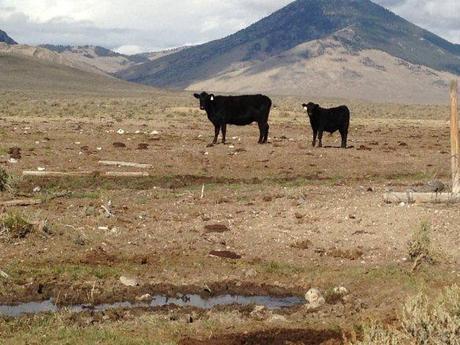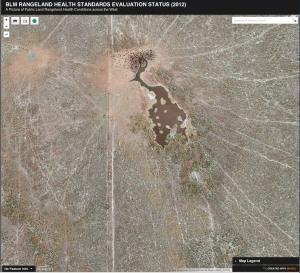 GR: PEER’s interactive maps give you BLM’s land health assessment, and let you zoom in to see actual conditions on the ground.
GR: PEER’s interactive maps give you BLM’s land health assessment, and let you zoom in to see actual conditions on the ground.
In 2012, BLM respond to a PEER statement that grazing allotment health was not accurately reported (http://www.blm.gov/wo/st/en/prog/grazing.html). The BLM did not explain why many allotments described as healthy have large areas that have been overgrazed and trampled excessively.

A highly degraded allotment in OR that BLM records as “All Standards Met” (Photo from PEER.org).
Using the Peer maps, citizen naturalists can visit nearby BLM grazing allotments and perform their own assessment. Weeds, trampled shrubs, barren trails, and more are visual testaments to excessive cattle use. Once problems are reported, BLM will make necessary corrections.
Thanks to Ralph Maughan of The Wildlife News for spotting the PEER maps.
The following is from PEER.org.
“On more than 250 million acres of public lands in the American West, grazing by domestic livestock constitutes by far the most widespread human-caused impact on fundamental range conditions, including habitat quality, riparian functioning, and endangered species. More extensive than the impacts of logging and mining combined, commercial livestock grazing exacts an enormous toll on native ecosystems and wildlife throughout the American West. It is a contributing factor to the endangerment of 22 percent of all federally listed threatened and endangered species, and a major contributor to non-point source water pollution and desertification.
“The U.S. Bureau of Land Management (BLM), the nation’s largest public lands-managing agency and administrator of grazing permits, is required to monitor the ecological impacts of grazing on its lands. BLM conducts evaluations of whether its grazing allotments meet “Land Health Standards” (LHS), but until now the results of these evaluations have been largely inaccessible to those outside the agency and their results have escaped independent review.”
Source: www.peer.org

